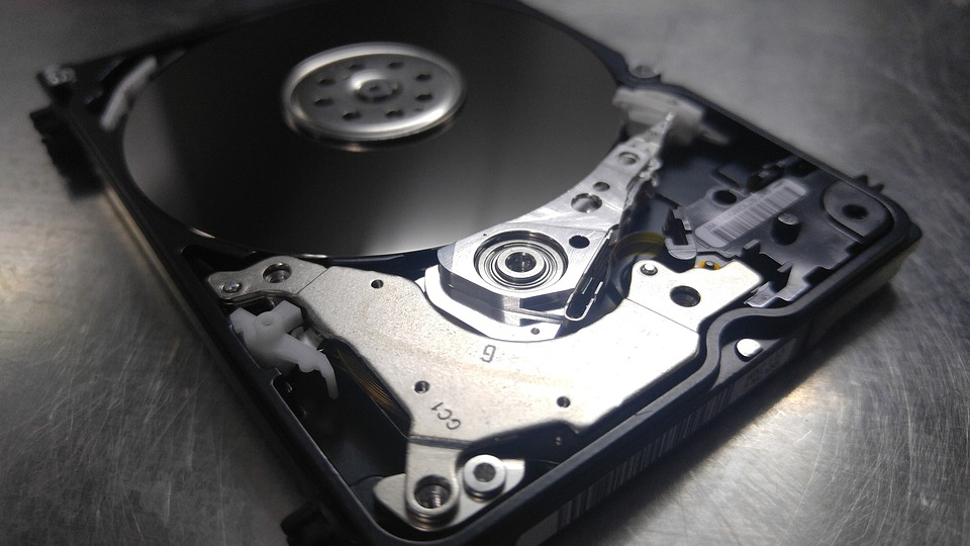Data recovery software vs. data recovery services: what's the best solution for you?
The answer depends on the value of your data and how it was lost

There are fewer things more valuable to most companies than their data. Customer records, analytics, financial documents—when such information is threatened with irrevocable destruction, it can be hard to know what to do or where to turn.
There are two ways to approach data recovery: personally purchasing and using data recovery software or seeking out professional help from a data recovery service. The latter tends to be significantly more expensive but has higher success rates and can deal with more difficult recovery scenarios.
While cost is an important factor, there are others to take into consideration as well. In this article, we look at when it’s appropriate to use data recovery software and when you should pay for a professional service.
- Best data recovery software of 2020: Paid and free file recovery solutions
Data recovery software: for accidental deletion and corruption
Data recovery software is most appropriate when trying to recover files that have suffered some kind of digital destruction, the most common of which are accidental deletion and file or drive corruption.
Data recovery applications, like EaseUS Data Recovery Wizard Pro and OnTrack EasyRecovery, can be quite successful in recovering files that have been accidentally deleted, even “permanently.” This is because deleted data isn’t actually erased from a hard drive: it is merely scheduled to be overwritten. Before this happens, the data can still be recovered.
When choosing data recovery software, there are a few important features to look for. The range of file types that can be recovered, for example, is a crucial factor. Most data recovery solutions can recover common photo, video, and document file types, but many businesses use less common proprietary file types.
You must also consider the operating systems and devices that your business and employees use, and opt for an application that supports all of them.
Are you a pro? Subscribe to our newsletter
Sign up to the TechRadar Pro newsletter to get all the top news, opinion, features and guidance your business needs to succeed!
The medium on which your data is written is also a factor. MiniTool Power Data Recovery, for example, can recover data from damaged CDs and DVDs. Businesses in the process of modernizing their storage methods will no doubt find this handy.
However, if your storage media has been physically damaged or if the files you’re trying to recover are critical to your business, you’ll want professional help. This is where data recovery services come into play.
Data recovery services: for physical damage and business-critical files
Data recovery services have several advantages over applications. First, you can benefit from the expertise and experience of trained professionals who have probably seen hundreds of different cases and will know the best methods to apply to the situation. The technicians at OnTrack, for example, have more than 1,400 years of combined experience recovering files from damaged drives.
Next, a much wider range of storage media is supported. Most applications can only handle hard disks and steady-state drives. Data recovery services will also support tapes, CCTV DVR, and others. Cloud storage poses a particular dilemma, especially multi-tenant cloud storage, because your data is more likely to be overwritten before action can be taken. This requires the quick intervention of a practiced hand.
The risk of losing data is also reduced with a data recovery service. If you’re trying to recover emails, spreadsheets, or documents that represent a few days’ work, this may not justify the higher cost of a recovery service. However, remember that deleted files risk being overwritten. Each further action taken on the hard drive increases the chance of this happening, including installing software. If you can’t afford to lose the information, get professional help.
Finally, if your storage medium has suffered physical damage, you will need professional help recovering files. Commercial data recovery software is no longer appropriate in this situation, as it will be unable to properly scan and read files. Damage from fire, exposure to water, even regular wear and tear can all result in data loss. It’s now a question of physical, not digital, destruction, which is beyond the capabilities of commercial data recovery software.
What to do if you’ve lost your data
First, immediately stop using the drive or medium from which the data has been lost. This will help prevent it from being accidentally overwritten or further corrupted. Assess the situation to determine the value of the data in question and what led to its loss.
If the data is not mission critical and has been lost due to accidental deletion or reformatting or the corruption of a USB or external drive, it’s probably safe to pay for commercial data recovery software and try to recover the deleted files yourself.
Most providers have an array of payment plans. If you only need a one-time fix, you might even be able to use free data recovery software. Stellar Data Recovery, for example, enables users to recover up to 1GB for free, which can go a long way for simple documents and spreadsheets. EaseUS, on the other hand, offers a lifetime license for $149.95, which is a solid business investment considering that many one-month or annual plans cost $50 or more.
If the information is vital for your business, however, or the device itself has been damaged (or is making clicks or other noises), you should call in professional help. Opt for a service that offers a free evaluation of your storage media: they’ll let you know how much data they expect to recover and at what cost.
How to present data loss
When it comes to protecting your data, a good defense is the best offense. You should be regularly backing up your data on-site or opting for a cloud backup solution. If you’re storing your data on-site, be sure to follow the 3-2-1 rule: three copies on two storage media, one of which is off-site.
Cloud backup solutions, however, are a better choice for many businesses. Market forces and improvements to technology have both helped bring down costs, so monthly and annual rates are often well worth the peace of mind. Cloud backup providers have the infrastructure, capital, and incentive to invest in multiple digital and geographical redundancies, as well as costly physical and cybersecurity measures.
We’ve put together a checklist to help businesses find the right cloud backup provider.
Data recovery software vs. data recovery services: what's the best solution for you?
Ultimately, the answer depends on the value of the data you’re trying to recover and the way in which it’s been lost. For low-value data or losses caused by deletion or corruption, data recovery software is a good first step. For high-value data or losses caused by physical damage, we recommend that you contact a data recovery service as soon as possible.
- The best data recovery software of 2020: Paid and free file recovery solutions
Christian is a freelance writer and content project manager with 6+ years' experience writing and leading teams in finance and technology for some of the world's largest online publishers, including TechRadar and Tom's Guide.
